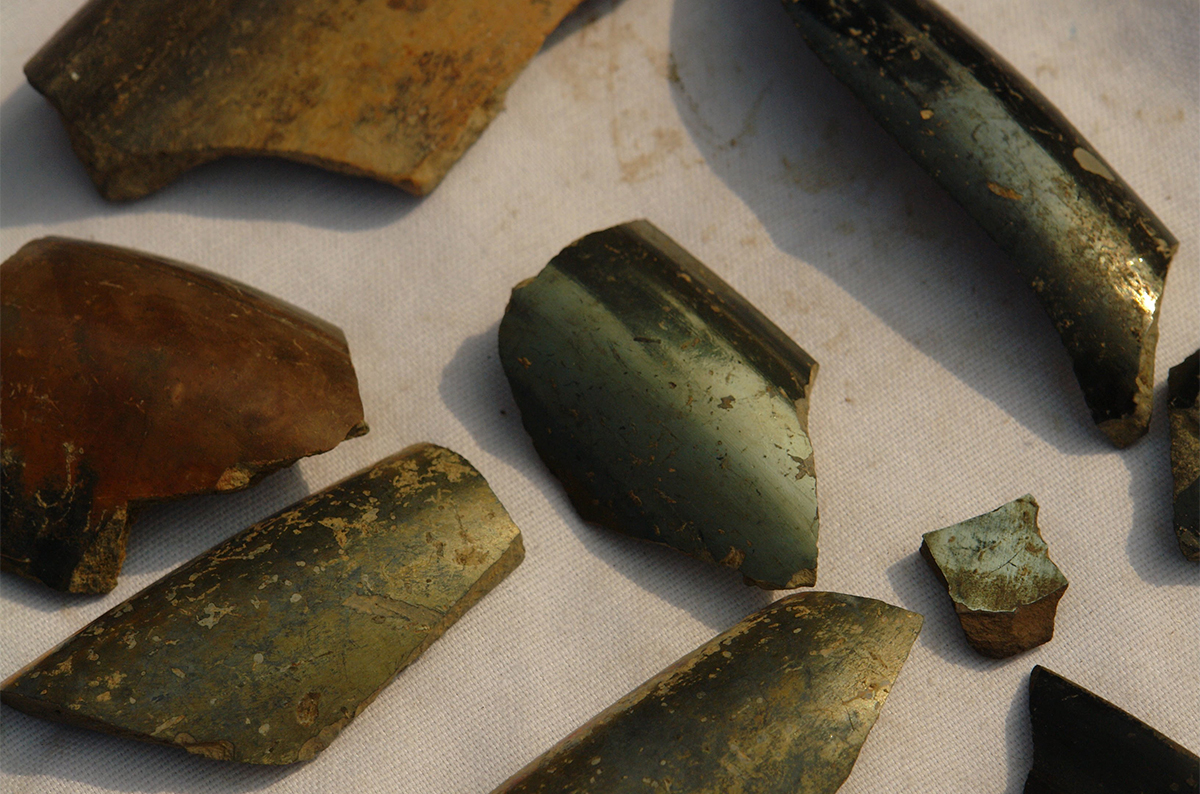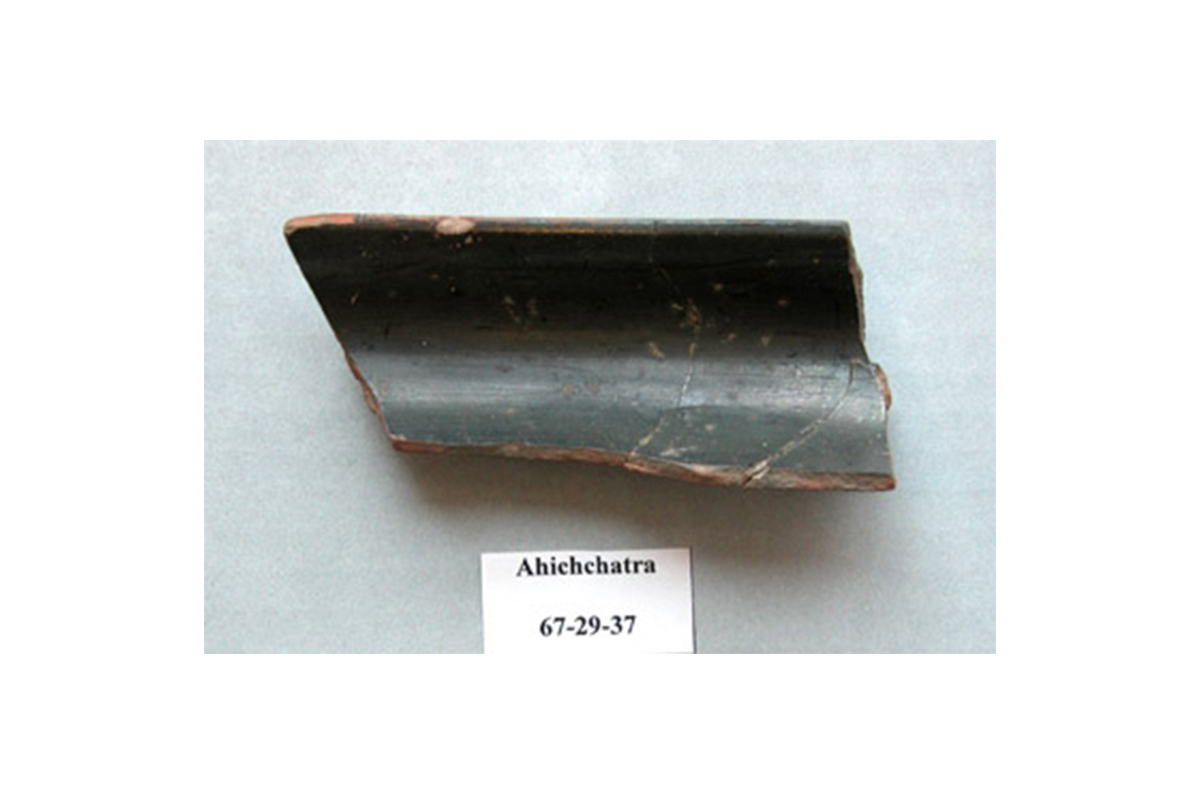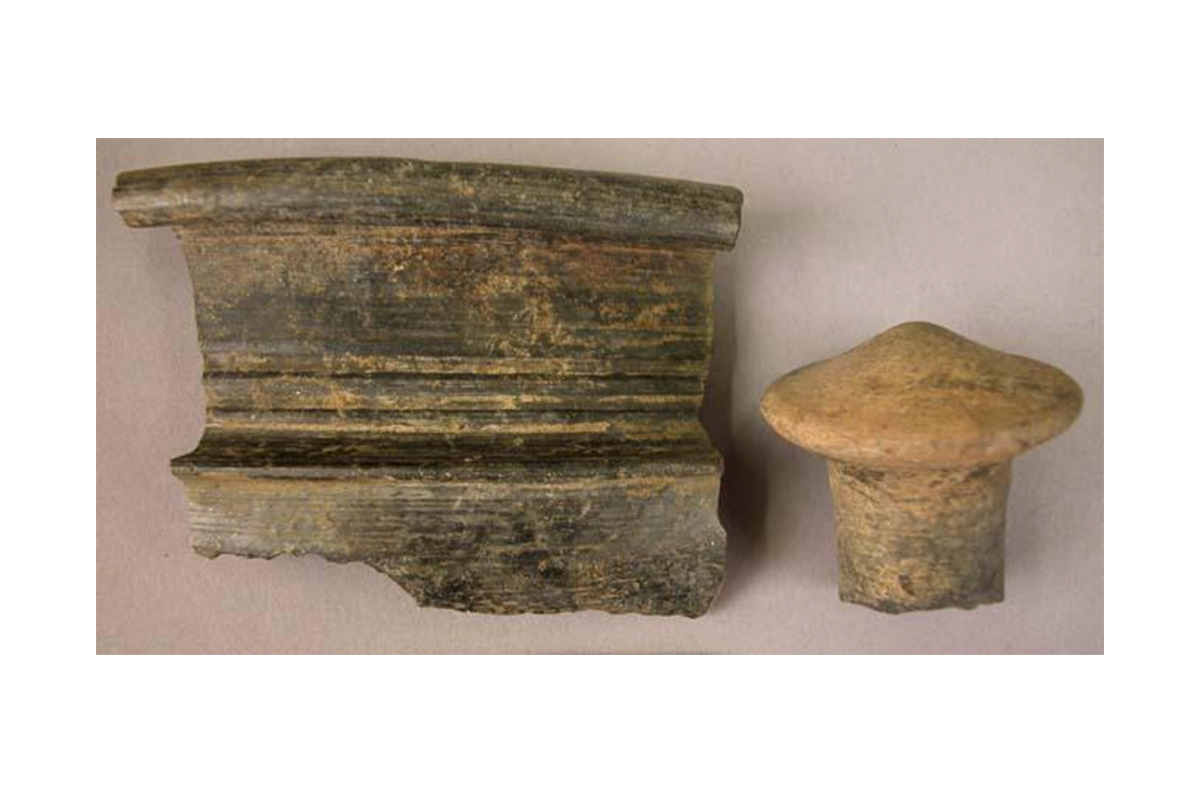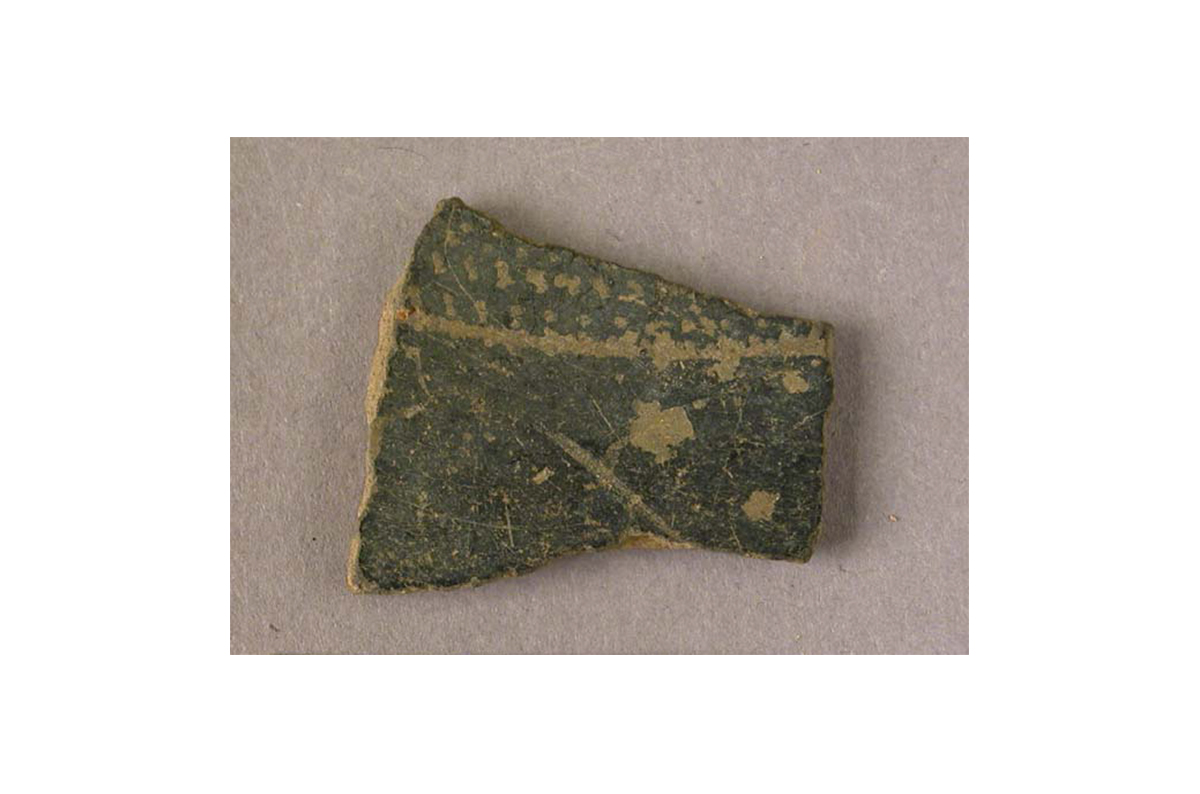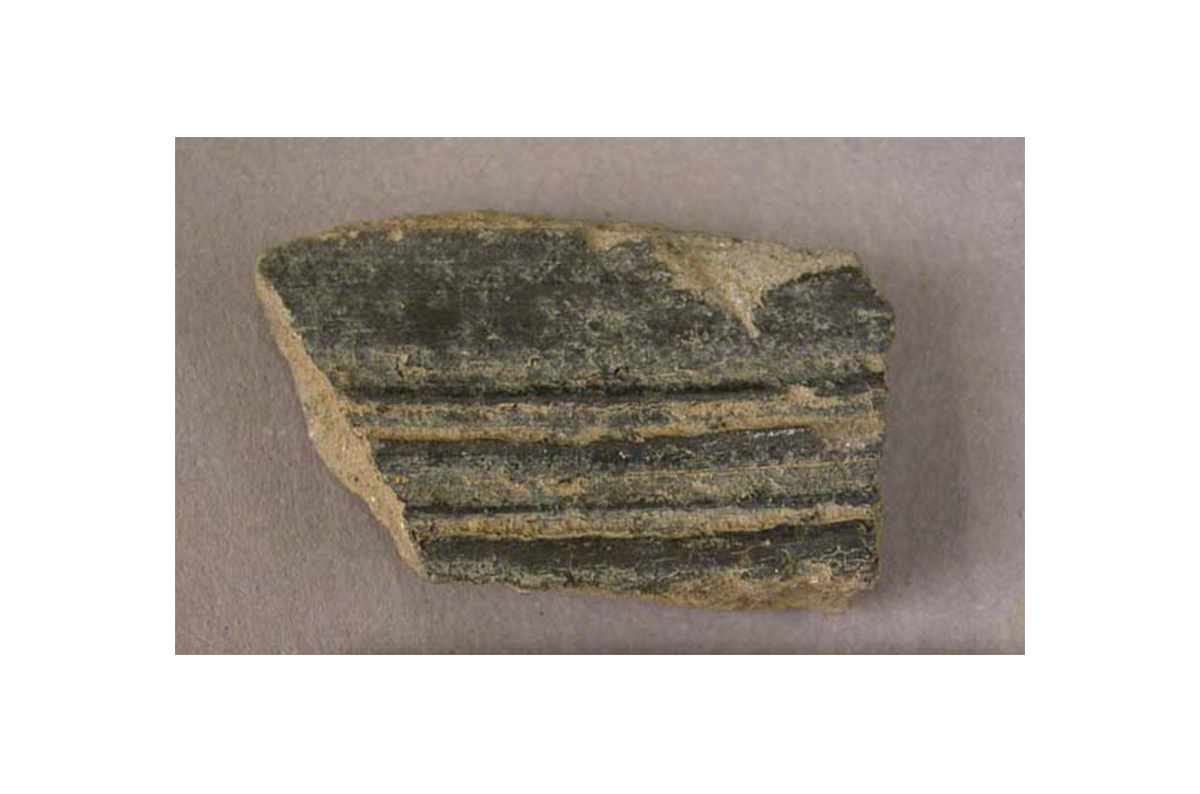ARTICLE
Northern Black Polished Ware
Dated to between 700 BCE and 200 BCE, during the Early Historic Period in the Indian subcontinent, Northern Black Polished Ware is an Iron Age pottery type characterised by glossy surfaces. The term “northern” was applied after initial finds of the pottery type were found in northern India, but sherds of this ware have also been found over a broad geographical range, from Taxila in Pakistan, to Amaravati and Prakash in India’s Deccan region and Anuradhapura in present-day Sri Lanka, and from Prabhas Patan in Gujarat, India, to Wari Bateshwar and Mahasthangarh in present-day Bangladesh.
Northern Black Polished Ware is made of fine levigated clay turned on a fast wheel, and features a burnished, glossy slip on the exterior and interior surfaces that can range from jet black to grey to steel blue in colour. While the black finish is the most common, wares with pink, gold-blue and brown-black polishes have also been found. How the glossy finish was achieved remains debated and has been ascribed to the use of an iron compound and the firing of pots in reduction conditions, with the application of oil or plant matter immediately after firing or a clay solution made of fine particles. In instances where the ware is painted, the design comprises geometric motifs such as horizontal bands, vertical strokes, dots, concentric circles, arches, loops and wavy lines executed in light vermilion or yellow.
The most common Northern Black Polished Ware objects are bowls, dishes, handis (cooking pots) and jars, which could be considered dining or tableware. Larger utensils or jars were not found. The value of this ware can be gauged by the fact that damaged utensils were repaired with copper wire or riveting, and it is likely that production of the ware was expensive and that there were fewer centres of production.
Northern Black Polished Ware has a few characteristics in common with Painted Grey Ware; Northern Black Polished Ware also comprised only a small percentage of the ceramic assemblage at sites where it was found — in this instance, around 5 percent — along with Painted Grey Ware, Plain Grey Ware, Fine Slipped Red Ware, Red Ware, Black Slipped Ware and Black and Red Ware. This has led to the speculation that Northern Black Polished Ware would have been a luxury item.
The place of origin and centres of Northern Black Polished Ware remain debated. Although the large terrain of the Gangetic Valley is considered the epicentre of the ware, some scholars have suggested that Pataliputra (present-day Bihar, India) may have been a site of origin, while others have suggested that Kausambi (present-day Uttar Pradesh, India) was an important site. The sites of Rajgriha, Vaishali, Ujjain and Maheshwar have also been suggested as likely sites of production. At Taxila, shards of the ware were found at a level lower than finds related to Alexander the Great’s campaign in the region (327–325 BCE). However, some scholars also state that a more widespread use of Northern Black Polished Ware can be approximately dated to between 350 BCE and 250 BCE; for instance, in Amaravati, Northern Black Polished Ware finds appear to have overlapped with Mauryan rule.
In northern India, Northern Black Polished Ware finds were accompanied by finds of iron tools for agriculture and hunting, as well as copper objects such as antimony rods and jewellery. It also displayed the earliest range of terracotta objects depicting human and human-like figures in the Gangetic Valley. In addition to these figures, the range of terracotta finds included seals, toys, beads, votive tanks and weights. The period also reflected extensive cultural contact across the subcontinent, evidenced by the presence of conch shells and marine shells from the Kutch region found in Taxila, where they appear to have been made into ornaments, trumpets and ritual libation vessels.
By the end of the third century BCE, Northern Black Polished Ware had declined in quality and number, and the ceramic culture became limited to Red Ware.
Bibliography
Kanungo, Alok Kumar, Chinmay Kulkarni, Varad Ingle, and Oishi Roy. “Northern Black Polished Ware in Indian Archaeology: A Study of Spatial and Chronological Distribution.” In Encyclopedia of Global Archaeology. Springer International Publishing, 2021.
Kenoyer, Jonathan Mark. “Interaction Systems, Specialised Crafts and Culture Change: The Indus Valley Tradition and the Indo-Gangetic Tradition in South Asia.” In Indian Philology and South Asian Studies, Volume 1, edited by Albrecht Wezler and Michael Witzel, 213–41. Berlin: Walter de Gruyter, 1995.
Nigam, J. S. “Northern Black Polished Ware.” Marg, June 1961.
Sharmin, Dilruba, and Fumio Akada. “Surface Coating Technique of Northern Black Polished Ware by the Microscopic Analysis.” Ancient Asia 3 (2012): 49–65. http://doi.org/10.5334/aa.12305
Singh, Upinder. A History of Ancient and Early Medieval India: From Stone Age to the 12th Century. Noida: Pearson India Education Services, 2016.




